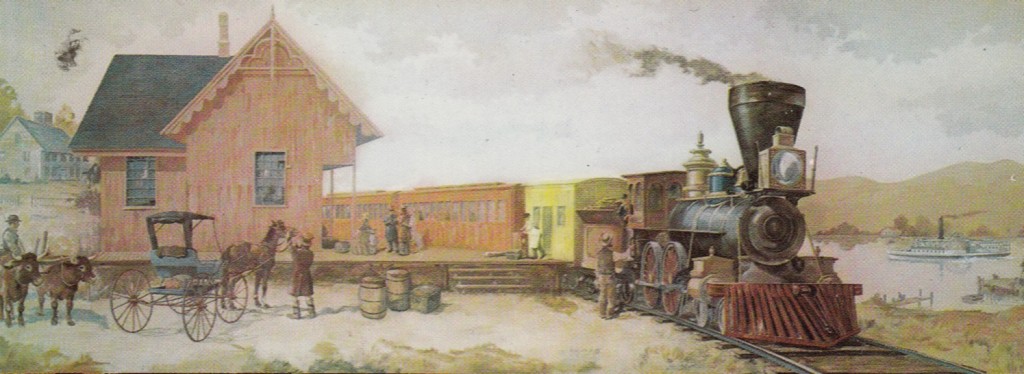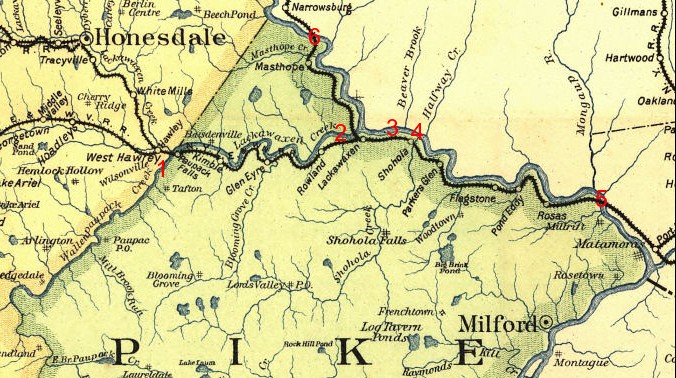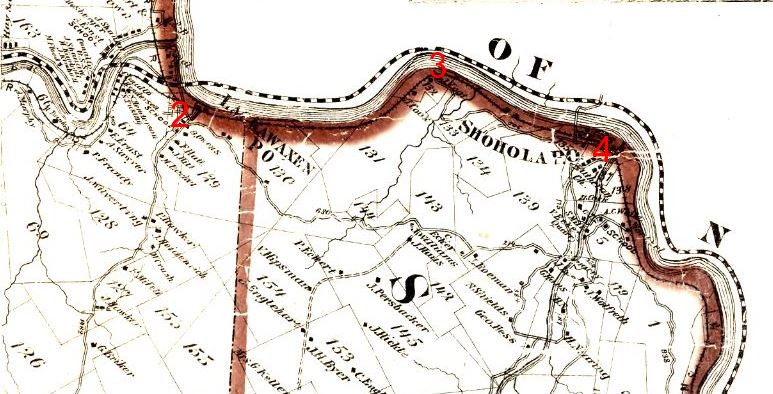The Great Shohola Train Wreck – Introduction to a Series of Posts
Posted By Norman Gasbarro on April 19, 2014
On 15 July 1864, at about 2 P.M., a train carrying 833 Confederate prisoners of war and a contingent of Union guards, collided head-on with a 50-car coal train on a single-track main line of the New York and Erie Railroad. The collision occurred about one-and-a-half miles west of the small village of Shohola, Pike County, Pennsylvania. The train carrying the prisoners was headed west from Jersey City, New Jersey, to the newly-established prison camp at Elmira, Chemung County, New York. The coal train was headed east from the Hawley branch railroad and was hauling coal from the vast anthracite coal fields of central Pennsylvania to the New York area. It was the greatest railroad disaster of the Civil War – and to that point in time, the greatest recorded railroad disaster in history. Forty-eight prisoners and seventeen Union guards were killed in the accident and many more were seriously wounded.
Pike County is located in the northeast corner of Pennsylvania and is separated from New York and New Jersey by the Delaware River. The above map from 1895 has been modified to show the points of interest to the train wreck. #1 is the point where the coal train entered the final connection on its approach to Lackawaxen where it would attempt to enter the main line of the Erie Railroad on its journey east. #2 is the junction at Lackawaxen where the coal train entered the main line and headed east toward Shohola. #3 is the approximate location of the collision of the coal train with the prisoner train. #4 is the village of Shohola, the last station the prisoner train passed before the collision. #5 is the point at which the prisoner train had to cross the Delaware River before entering Pennsylvania; note the word “Port” (to the right) is for Port Jervis, the last major station in New York. #6 is the point at which the prisoner train was supposed to re-cross the Delaware River and re-enter New York before continuing on its way to the prison camp at Elmira, Chemung County, New York.
My personal interest in this train wreck includes the fact that for about eight years, I lived just a few miles from the site of the wreck, just north of a point noted on the map as “Big Brink Pond.” The small “lake” just above “Big Brink Pond” is presently called “Little Twin Lake” and it was there that my home was located. During my time in Shohola Township, Pike County, I became acquainted with George J. Fluhr, Pike County Historian, who shared with me his research on the train wreck. George also wrote and published The Civil War Tragedy at Shohola, which remains one of the best print resources on this event. Since those days in the years 1996-2004, I have intermittently continued my research on the incident and have have discovered some additional information which I am now pleased to share with the readers of this blog.
There is also the connection which I will make between the location of the prison camp at Elmira and the Northern Central Railroad. This railroad ran right through Millersburg and ended at Elmira where transfer could be made to other railroads for trips north to Canada, west to the Great Lakes, and east to New York. Those Union guards who survived the train wreck were returned to the area of Point Lookout, Maryland, by the Northern Central Railroad – not by the Erie – and for all later train-loads of prisoners to Elmira via the New York and Erie Railroad, the guards returned the same way – via Millersburg and Harrisburg to Baltimore!
The 1872 map shown below give greater detail to the area where the wreck occurred.
The numbered points on the map, #2, #3, and #4, correspond to the legend given for the first map, with #3 representing the approximate point where the two trains collided.
The point where the collision occurred, King and Fuller’s Cut, is shown in the above video, which was posted to YouTube in 2012. The site has been slightly modified since the wreck occurred and for many years after the Civil War had double tracks but has now been returned to a single track line. The growth of vegetation and the deterioration of the stone wall are other notable differences, but essentially the look and feel of the site lines is most likely about the same as it was in 1864.
Thus, in commemoration of the 150th Anniversary of the Great Shohola Train Wreck, which will occur on 15 July 2014, this series of posts is presented. The next post will feature some of the first newspaper accounts of the tragedy.
To see all the posts in this series, click on ShoholaTrainWreck.
—————————–
The picture of the 1864 passenger train at the top of this post is from my personal files on the train wreck and was copied and enhanced from a picture post card image showing a painting in the reception room of the Travelers Insurance Company headquarters. The original painting, oil on canvas, was by Frank J. Lefevre. No pictures are known to exist of any of the railroad equipment involved in the wreck.
The map cuts are modified from maps available at the Pennsylvania Archives and from Pennsylvania Railroad Stations Past and Present.
 ;
;





I just wanted to thank you for including my short video of the Shohola Train Wreck site. I will be speaking at the event at both Barryville and at the actual wreck site this Sunday!!!
~Chaplain Scott J. Payne
The Rebel Chaplain
1st Va Light Artillery